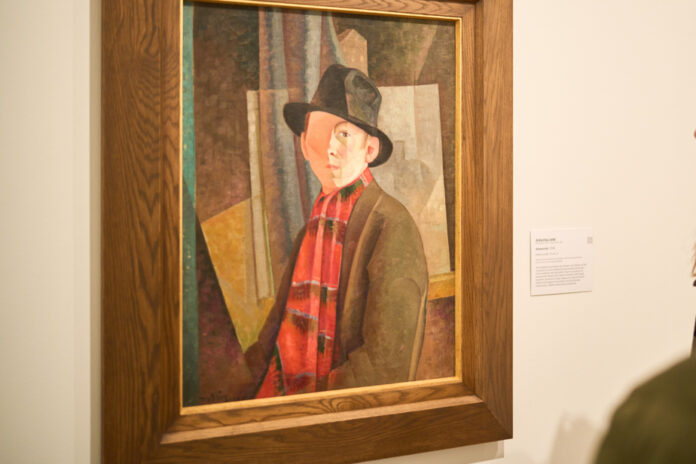Historian Laurier Lacroix is currently curating an exhibition on the theme of artists’ studios in Quebec, at the Musée d’art de Joliette. An exciting deployment in these spaces where artists seek, rest and create. With works by Théophile Hamel, Stanley Cosgrove, Jean Dallaire, Gabor Szilasi, Raymonde April, Michel Campeau, Massimo Guerrera and Raphaëlle de Groot.
He has visited workshops, Laurier Lacroix, for half a century. A specialist in French-Canadian art from before 1930, of Ozias Leduc and Marc-Aurèle de Foy Suzor-Coté, he has always appreciated these magical places that shed light on the artist and his creative gesture. The exhibition therefore teaches us a lot about artists’ studios in Quebec, but also a lot about Laurier Lacroix. On this passion that still drives him in an admirable way and on the eclecticism he has shown to cover with scientific precision this field of study devoted to the creative process.
The exhibition L’atelier comme création is a collateral element of the enormous research he has been conducting for several years on the history of workshops in Quebec and which will result in a publication this year. It was made possible by numerous loans from private and museum collections. It is organized around five themes: the portrait and the self-portrait in the studio; the workshop as an open space; the workshop as subject; workshop functions; and the studio as work.
The exhibition begins with L’entrée de mon atelier, a painting by Adrien Hébert whose characteristics we explained last summer during a report on the backstage of paintings. We discover the painter’s studio – previously occupied by Napoleon Bourassa (1827-1916) – while Adrien Hébert, standing in the doorway, shows his paintings for sale. The studio as a gallery, in a way. Next to this painting, Laurier Lacroix placed the frame of a door painted by Serge Lemoyne in 1963. There, it is part of the studio that becomes object and support of the work.
Laurier Lacroix then declines the different types of workshops. L’atelier de plein air, with a view of Quebec by Jean-Baptiste Duberger (1767-1821) from the heights of Beauport, also with the two paintings by Goodridge Roberts resulting from his stay in Saint-Jovite (a landscape and a quote from the same landscape), or with the work of Raphaëlle de Groot who creates in the public space.
It also illustrates the workshop built outside a house (at Théophile Hamel), or the family workshop, as described in La famille à l’ouvrage, an oil painting by Simone Mary Bouchard. The Baie-Saint-Paul artist depicted herself working with her family in the dining room. Or again, he sheds light on the studio-apartment, like that of Fernand Leduc who, in 1946, had sublet a space to Claude Gauvreau.
The portrait-self-portrait section includes a wide variety of works. From the photograph of Raymonde April, where we see her quietly seated near her window in her apartment on rue Saint-Urbain, in Montreal, while a breeze enters the studio like the breath of creation, to the self-portraits splendid works by Edwin Holgate and Ernst Neumann, and those taken by photographer Ève Cadieux.
The workshop as a subject is well illustrated by the oil painting by Charles Huot (1855-1930) where his daughter is seated in front of her easel. Also with John Fox’s Cleaners I canvas seen cleaning his studio! Michel Campeau, of course, also represented his studio in a very intimate way, with his fine sensitivity to detail.
Massimo Guerrera will also bring his installation to life during a performance on April 28.
We also liked the video Light Patch, by Sylvia Safdie, taken on the floor of her studio. The variation of light gives the impression of a sun lighting up a desert.
Here is a very instructive and well-done exhibition, in the continuity of Esther Trépanier’s fascinating exhibition on abstraction in the 1940s, in the same place. We will have to wait for the publication of Laurier Lacroix’s book to complete this visit. But in the meantime, in addition to going to Joliette, why not visit one of the few accessible workshops in Quebec, that of the painter Rodolphe Duguay (1891-1973), in Nicolet? A workshop that his father had built for him in the image of his Parisian workshop. It’s open every day, except Monday. Good visits!















